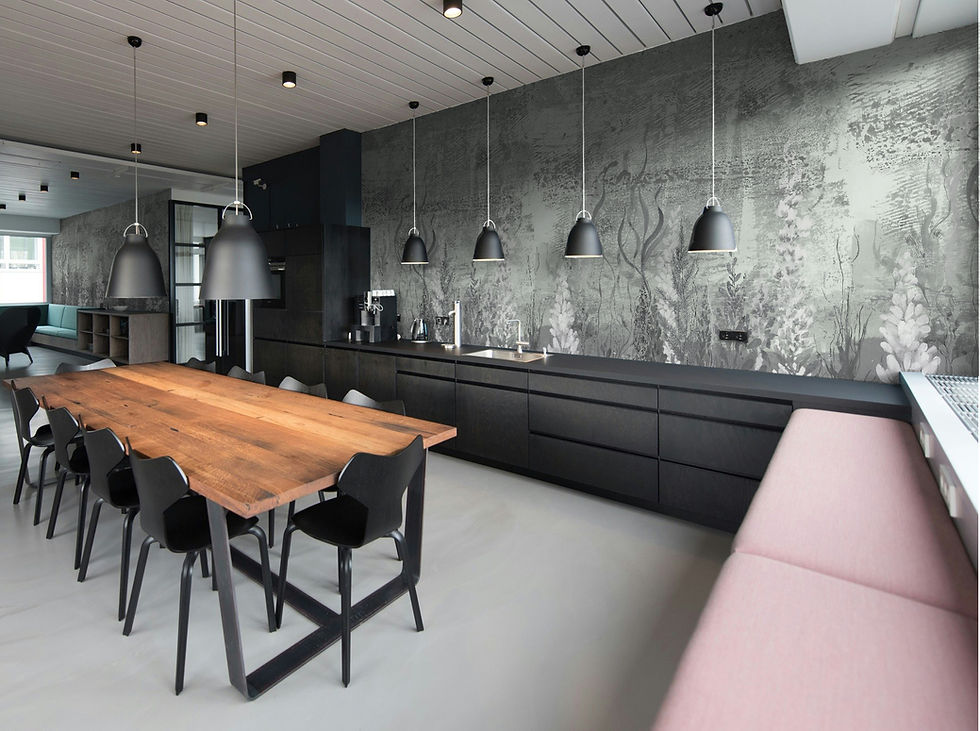A Beginner's Guide to Choosing Durable Wallcoverings
- Guillermo
- Apr 29
- 4 min read
Choosing durable wallcoverings can be a daunting task, especially with the multitude of options available today. Whether you are redecorating your home, renovating an office, or sprucing up a commercial space, the right wallcovering can make all the difference. This guide aims to simplify the selection process for beginners by providing essential information, practical tips, and recommendations.
Understanding Durable Wallcoverings
Durable wallcoverings are designed to withstand wear and tear while maintaining their aesthetic appeal. They come in various materials, patterns, and finishes, catering to different tastes and functional needs. Types of durable wallcoverings include vinyl, fabric, and natural materials like bamboo or cork. Each type has its own unique properties that make it suitable for specific environments.
For instance, vinyl wallcoverings are popular in high-traffic areas due to their toughness and ease of cleaning. They are resistant to stains and moisture, making them ideal for kitchens and bathrooms. On the other hand, fabric wallcoverings may offer a richer texture and visual appeal but could be less durable in terms of stains and wear.

Factors to Consider When Choosing Wallcoverings
1. Purpose and Location
Before choosing wallcoverings, assess the purpose and location of the installation. Areas such as living rooms and bedrooms may allow for more decorative options, while kitchens and bathrooms require materials that can withstand humidity and stains. Choosing the right material based on location can extend the lifespan of your wallcoverings significantly.
For instance, vinyl wallcoverings are perfect for areas exposed to moisture, while natural materials may be better suited for dry environments. Additionally, consider whether the wallcoverings will be near high-contact areas where scuffing may occur.

2. Durability and Maintenance
The durability of wallcoverings is crucial, especially for those in high-traffic areas. Look for materials that are easy to clean and maintain. Vinyl wallcoverings often come with an easy-to-wipe surface, while some fabric options may require professional cleaning.
When assessing durability, check the manufacturer's specifications. Thicker wallcoverings typically offer greater durability. You may also come across ratings that indicate the lifespan and maintenance requirements, which can help in making an informed decision.

3. Aesthetic Appeal
While durability is important, the aesthetics of wallcoverings cannot be overlooked. The texture, color, and pattern play a significant role in creating a cohesive design in your space. Opt for styles that complement your existing decor.
When browsing through samples, consider how different colors and patterns will look under various lighting conditions. This will help you envision how the wallcovering will impact the overall mood of the room.
4. Budget Considerations
Budget is often a determining factor when selecting wallcoverings. Prices can vary significantly based on the material, brand, and design of the wallcovering. It is essential to set a budget before exploring options.
Remember to factor in both the cost of materials and installation. Some wallcoverings are easier to install DIY, while others may necessitate professional help due to their weight or application method. Assess long-term costs as well—investing in high-quality, durable wallcoverings can save money in the long run by reducing the need for replacement.
5. Environmental Impact
With growing environmental awareness, eco-friendly wallcoverings have gained popularity. Materials made from recycled or sustainable sources can reduce your carbon footprint while offering durability. Consider wallcoverings that are low in volatile organic compounds (VOCs) for healthier indoor air quality.
Take the time to research brands and products that prioritize environmentally friendly practices. Many manufacturers provide details about their production processes and material sourcing on their websites.
Practical Tips for Installation
When it comes to installation, preparation is key. Ensure the wall surface is clean, dry, and primed. For stuck or stubborn wallcoverings, professional installation may be your best bet to avoid bubbles, wrinkles, and misalignment.
Plan Layout: Measure the space accurately and plan the layout to minimize waste. Make sure patterns align properly for a cohesive look.
Gather Tools: Have all necessary tools on hand, including a utility knife, smoothing tool, and adhesive.
Take Your Time: Rushing can lead to mistakes. Take your time to ensure every piece is applied carefully and correctly.
Exploring Different Wallcovering Materials
When it comes to durable wallcoverings, understanding the materials available is essential for making an informed choice. Here are a few commonly used options:
Vinyl
Vinyl is one of the most durable wallcovering materials available. It is water-resistant, easy to clean, and can be made in various designs, from patterns to textures. Given its high resistance to stains and scrubbing, it is particularly suitable for homes with children or pets.
To find detailed information, consider looking up the vinyl wallcovering specifications provided by reputable manufacturers.
Fabric
Fabric wallcoverings can add a touch of warmth and elegance to any room. They come in various textures and patterns and can create a cozy atmosphere. However, fabric is generally more challenging to clean and may require special care to maintain its appearance over time.
Natural Materials
Natural wallcoverings, such as cork, bamboo, and grasscloth, offer unique textures and eco-friendly options. They can be more expensive and may require more maintenance but can create a striking aesthetic that synthetic materials cannot replicate.
The Final Touches
Choosing durable wallcoverings is not just about selecting a design; it is about finding the right balance between aesthetics and functionality. By understanding the types of materials available, considering factors like location and budget, and planning for installation, you can make an informed choice that enhances your space.
Durable wallcoverings not only add style but also contribute to a refined and lasting interior. Take your time, experiment with various options, and don’t hesitate to seek samples before making a final decision. By following this beginner's guide, you are well on your way to selecting wallcoverings that will stand the test of time.




Comments